Loreto
Iquitos
Loreto
In Loreto, imposing river cruisers converted into five-star hotels pass through Peru's gigantic jungle on the Amazon, while Mother Nature's voice can be heard like nowhere else.
An example of its incomparable natural wealth is the incredible Pacaya Samiria National Reserve, which is home to a biological diversity composed of 527 bird species, 102 mammals (including the pink dolphin), 69 reptiles, 58 amphibians, 269 types of fish and 1025 wild and domesticated plant species.
Location
Amazon forest in the northeast of Peru, bordering Ecuador, Colombia and Brazil
Capital
Iquitos (104 meters)
Elevation
min.: 70 meters (Amelia)
max.: 220 meters (Balsapuerto)
Climate
Temperature
Max.: 38 °C Min.: 21 °C
Flood season: (november - june)
Dry season: (july - october)
Arriving
By land
Nauta - Iquitos: 115 km / 2 hr
By air
Lima - Iquitos: 1 hr 40 min
Tarapoto - Iquitos: 50 min
Pucallpa - Iquitos: 50 min
By river
Pucallpa - Iquitos (the port of La Hoyada) along the Ucayali River: 4 - 5 days
Yurimaguas - Iquitos along the Huallaga River and the Marañón River: 2.5 - 3 days
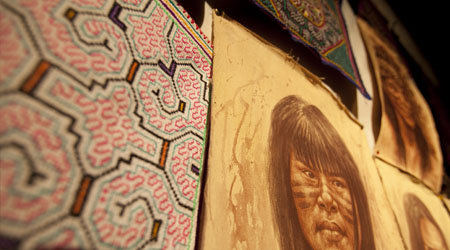
What to buy?
Throughout the region, artisans work with products they extract from nature.
They produce blankets and bags woven with plant fibers such as chambira, woodcarvings, black clay ceramics decorated with Kukama Kukamiria iconography and paintings on llanchama (the bark of a tree).
What to eat?
In addition to the popular juane (steamed rice with chicken in a bijao leaves), tacacho con cecina (a banana dough with cured pork), the gastronomy of Loreto provides other servings that are fed from its abundant nature, such as chonta salad (made from the stem of the palm) and ceviche de dorado (a freshwater fish) and patarashca (fish wrapped in bijao leaves).
Exotic local fruits are used to prepare cool drinks such as aguajina (based on aguaje) and chapo (ripe plantain).
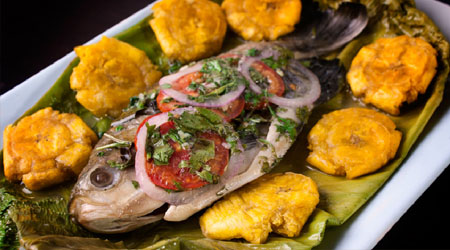
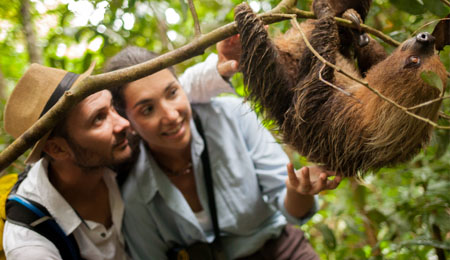
Tours (3 days the minimum recommended stay)
City center: main church, museums and mansions
City tour: Amazon River, Amazon tourist lookout, Pilpintuwasi butterfly farm and Bora Community of San Andrés
Amazonian Rescue Center
Pacaya Samiria National Reserve, lodges and cruises along the Amazon River and its tributaries
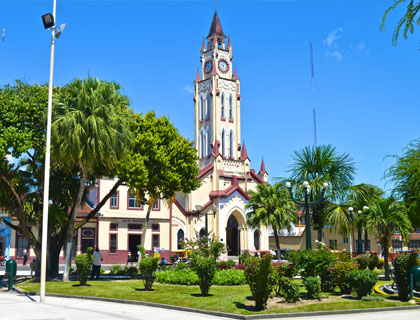
The Iquitos Main Church
The church’s construction took 13 years and was completed in 1924. It’s design has an evident Neo-Gothic influence. The wood-carved pulpit is a feature of its single nave. In 1925 a Swiss-made clock was added to its tower and continues telling time.
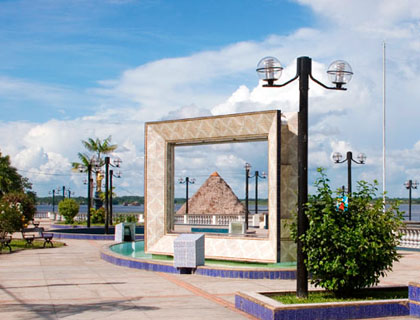
Malecón Tarapacá
Location: One block from the Main Square, on the banks of the Itaya River.
Built during the rubber boom in memory of the Bale of Tarapacá, this esplanade is now restored. The small squares, bars and restaurants located along its length are perfect places to sit and enjoy the view.
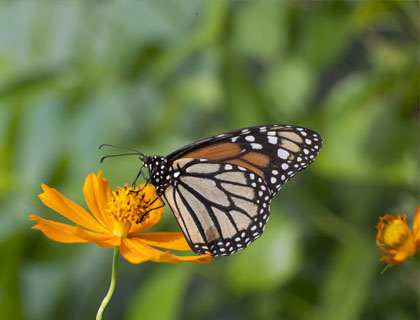
The Pilpintuwasi Buerfly Farm and Rescue Center
Location: A 15 minute walk from the village of Padre Cocha, to the northeast of the city of Iquitos.
Visiting Hours: Tues-Sun: 09:00 – 16:00 hrs.
Ticket entry.
The name in Quechua means ‘house of the buerflies’ because it hosts more than 20 varieties of exotic buerflies. The ideal time for a tour to appreciate the wide variety of buerflies in flight is between 9 am and 11 am. In addition to viewing the buerfly in its natural state, visitors can learn more about its reproductive process and life cycle. As it is also a wildlife rescue center, jaguars, manatees and parrots can be seen as well, among other species.
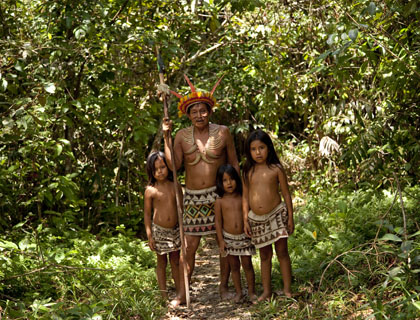
The Bora Community of San Andrés
Location: On the banks of the Momón River, to the northeast of the city of Iquitos (20 min. by motorboat from Bellavista Nanay).
Ticket entry.
This community originally inhabited the upper areas of the Putumayo on the border with Colombia, but migrated to its current location aracted by the rubber boom. A visit allows one to discover the traditions of its people, who view the world through their mythology. Dances and handicrafts are the principal examples of their customs.
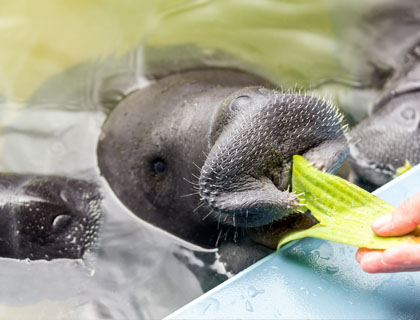
The Amazonian Rescue Center
Location: On the Iquitos-Nauta Highway 4 km to the southwest of the city of Iquitos (25 min. by mototaxi).
Visiting Hours: Mon-Sun 09:00 – 15:00 hrs.
Ticket entry.
The center is responsible for rescuing and releasing endangered species of Amazon wildlife. During a tour the visitor can see the animals that have been rescued and are in the process of rehabilitation.
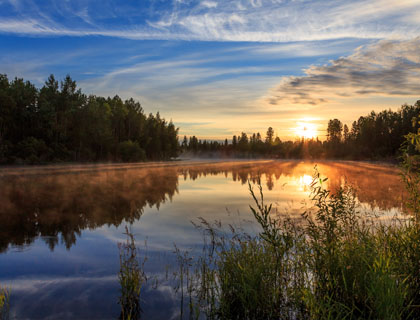
Pacaya Samiria National Reserve
Location: 183 km to the southwest of the city of Iquitos (Iquitos-Nauta by car - 2 hr. and Nauta to the Community 20 de Enero - 1 hr. by motorboat).
Ticket entry.
It is necessary to engage the services of a tourist operator to undertake this visit. The reserve is not only one of the largest in the country but also in South America. Abundant rain feeds its diverse flora, with 1025 species of wild and cultivated plants. It is habitat for 527 species of birds, 102 species of mammals, 69 reptile species, 58 amphibian species and 269 fish species, many of them endangered.
More than 42,000 people live along the banks of the Marañón and Ucayali rivers, as well as another 50,000 in the buffer zone.



